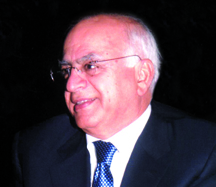DDC system & auto parts
like most of my friends in the intermediate school, i hated english language. unlike the distinguished students who came from the national school (jaafariyah), i found the language hard. however, a palestinian english teacher changed my view about the language and i eventually started loving it. i still do, even though after 60 years i consider myself half-educated in everything. supervising the school library of al-sadiq school was one of the tasks of that outstanding teacher. he discovered my love for reading and for books, so he decided to use me for classifying library books in a way that makes fi nding any book easy without much trouble. a few days ago, i remembered the rules of classifi cation after all these years. research has shown that it is still being followed in majority, if not all, of the world’s largest libraries, school libraries and science institutes, such that it is being taught as a science. this new system was developed by the american melvil dewey, in 1876. it is the fi rst decimal system of library classifi cation, called dewey decimal classifi cation (ddc), one of the most famous systems. this system is based on dividing the knowledge of humankind (non- fi ction) into ten major sections and each branch of the main sections into ten majors that represent the main subject. each division is also divided into ten branches based on the nature of the subject. thus, each branch is divided into ten, so that the decimal division can continue indefi nitely. the system has been continuously revised to respond to evolving needs for information in traditional libraries and electronic media. the latest version of the dewey system was developed after several versions, making it more appropriate than previous versions to search through internet sources. the knowledge base of the system has also been expanded by adding several new categories and extending the categories it contains. terminology and description of categories have been widely updated in the system to refl ect their sophistication, international usage and sensitivity to the preferred uses of social and national groups. structural changes included improving titles and expanding relative indexing; that is to say the decimal classifi cation introduced the concepts of relative location and relative index which allow new books to be added to a library in their appropriate location based on the subject. the ongoing search for the dewey decimal classifi cation system has been the objective behind producing a versatile version capable of organizing large collections of electronic documents, particularly on the internet and on global sites. for example, the books on general knowledge, computer science, information and public works will have numbers that start from 000 to 099, those on philosophy and psychology from 100 to 199, and those on religions from 200 to 299, and so on. regarding the auto parts, the situation is a bit different, and easier within a state or a company, with the difference between the industrial and secret military, and so on. the spare part, for example the number hsco424pp, can be easily read and understood by the spare parts employee. the fi rst letter refers to solid equipment, the second refers to the screw, the following fi ve letters represent the height in inches, and the last two are the screwdriver type, and so on. the topic is interesting and worth reading and learning more about.
email:






